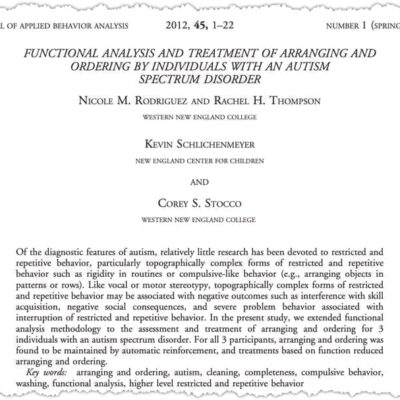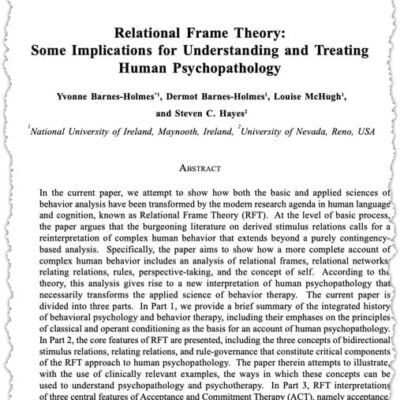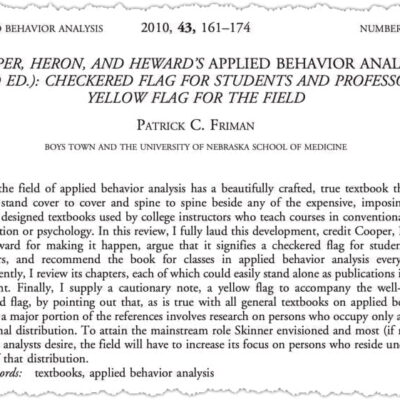Balancing the Right to Habilitation with the Right to Personal Liberties
$9.99
BCBA CEUs: 1 Total CEU | 1 Ethics CEU
Read the following article and pass a 7-question quiz on it:
Bannerman, D. J., Sheldon, J. B., Sherman, J. A., & Harchik, A. E. (1990). Balancing the right to habilitation with the right to personal liberties: The rights of people with developmental disabilities to eat too many doughnuts and take a nap. Journal of Applied Behavior Analysis, 23, 79-89.
Brand: CEUniverse
Description
To earn credit, you will be required to read the article and pass a 7-question quiz about it. You can retake the quiz as many times as needed, but you will not receive exactly the same questions each time.
Abstract
In the pursuit of efficient habilitation, many service providers exercise a great deal of control over the lives of clients with developmental disabilities. For example, service providers often choose the client’s habilitative goals, determine the daily schedule, and regulate access to preferred activities. This paper examines the advantages and disadvantages of allowing clients to exercise personal liberties, such as the right to choose and refuse daily activities. On one hand, poor choices on the part of the client could hinder habilitation. On the other hand, moral and legal issues arise when the client’s right to choice is abridged. Recommendations are offered to protect both the right to habilitation and the freedom to choose.
1 review for Balancing the Right to Habilitation with the Right to Personal Liberties
| 5 star | 100 | 100% |
| 4 star | 0% | |
| 3 star | 0% | |
| 2 star | 0% | |
| 1 star | 0% |
Sorry, no reviews match your current selections
You may also like…
-
Interactive Video

1.5 BCBA CEUs
Functional Communication Training: Research Foundations
Wayne Fisher5.00 out of 5(3)$14.99 Add to Cart Quick View -
Article Quiz

1 BCBA CEU
Interventions for Increasing Acceptance of New Foods Among Children and Adults with Developmental Disorders: A Systematic Review
L.R. Chawner, P. Blundell-Birtill, & M.M. Hetherington$9.99 Add to Cart Quick View -
BundleSale!

3 Total BCBA CEUs
3 Supervision CEUsSolar Bundle
4.00 out of 5(1)$29.97Original price was: $29.97.$22.47Current price is: $22.47. Add to Cart Quick View
Related products
-
Article Quiz

2 BCBA CEUs
Functional Analysis and Treatment of Arranging and Ordering by Individuals with an Autism Spectrum Disorder
Nicole M. Rodriguez, Rachel H. Thompson, Kevin Schlichenmeyer, & Corey S. Stocco4.50 out of 5(14)$19.99 Add to Cart Quick View -
Article Quiz

1.5 BCBA CEUs
Relational Frame Theory: Some Implications for Understanding and Treating Human Psychopathology
Yvonne Barnes-Holmes, Dermot Barnes-Holmes, Louise McHugh, & Steven C. Hayes4.53 out of 5(17)$14.99 Add to Cart Quick View -
Article Quiz

1.5 BCBA CEUs
Cooper, Heron, and Heward’s Applied Behavior Analysis (2nd ed.): Checkered Flag for Students and Professors, Yellow Flag for the Field
Patrick C. Friman4.41 out of 5(17)$14.99 Add to Cart Quick View




Great article on choice and when choices can be limited